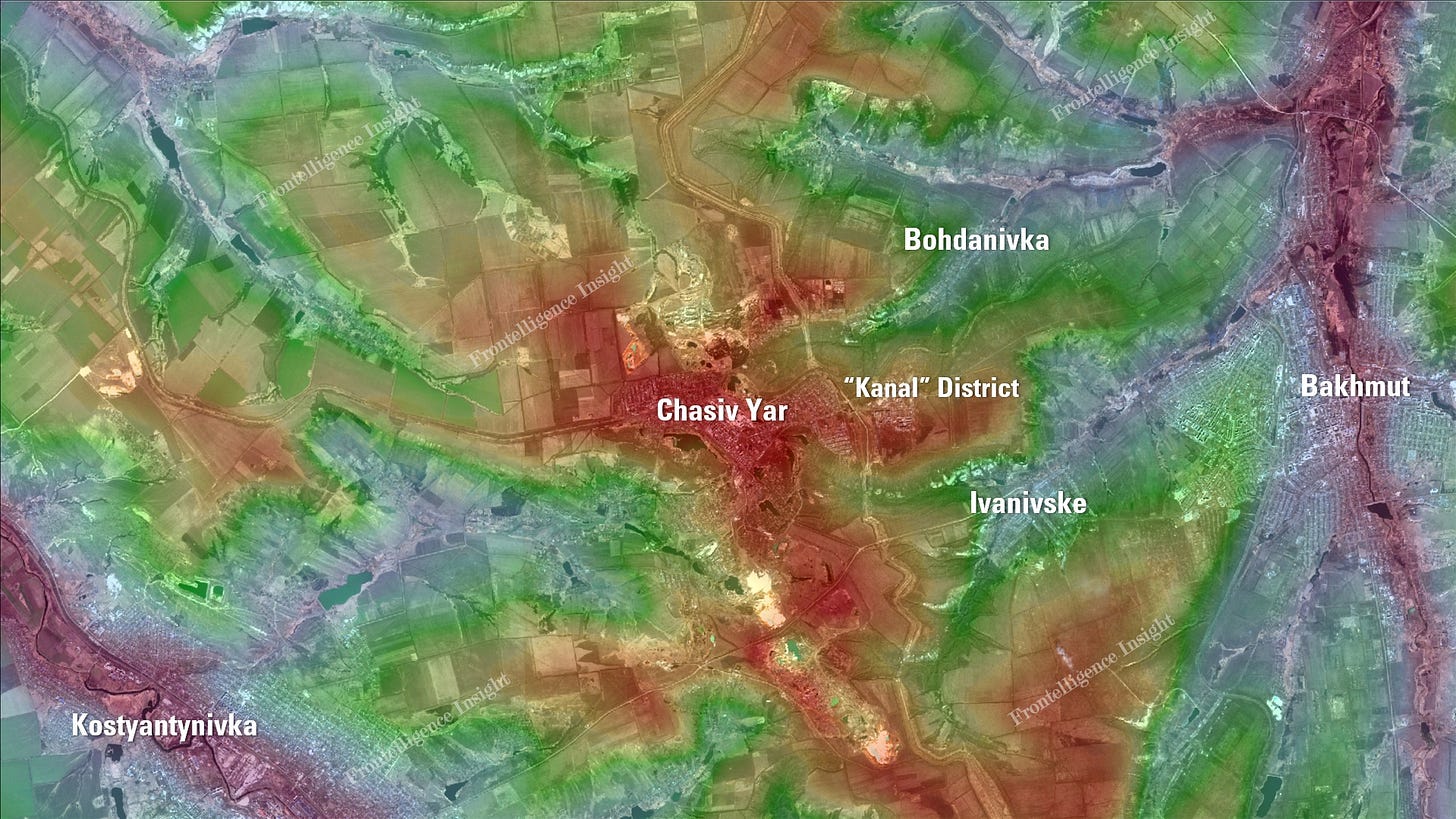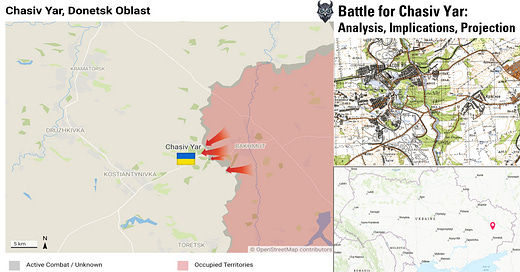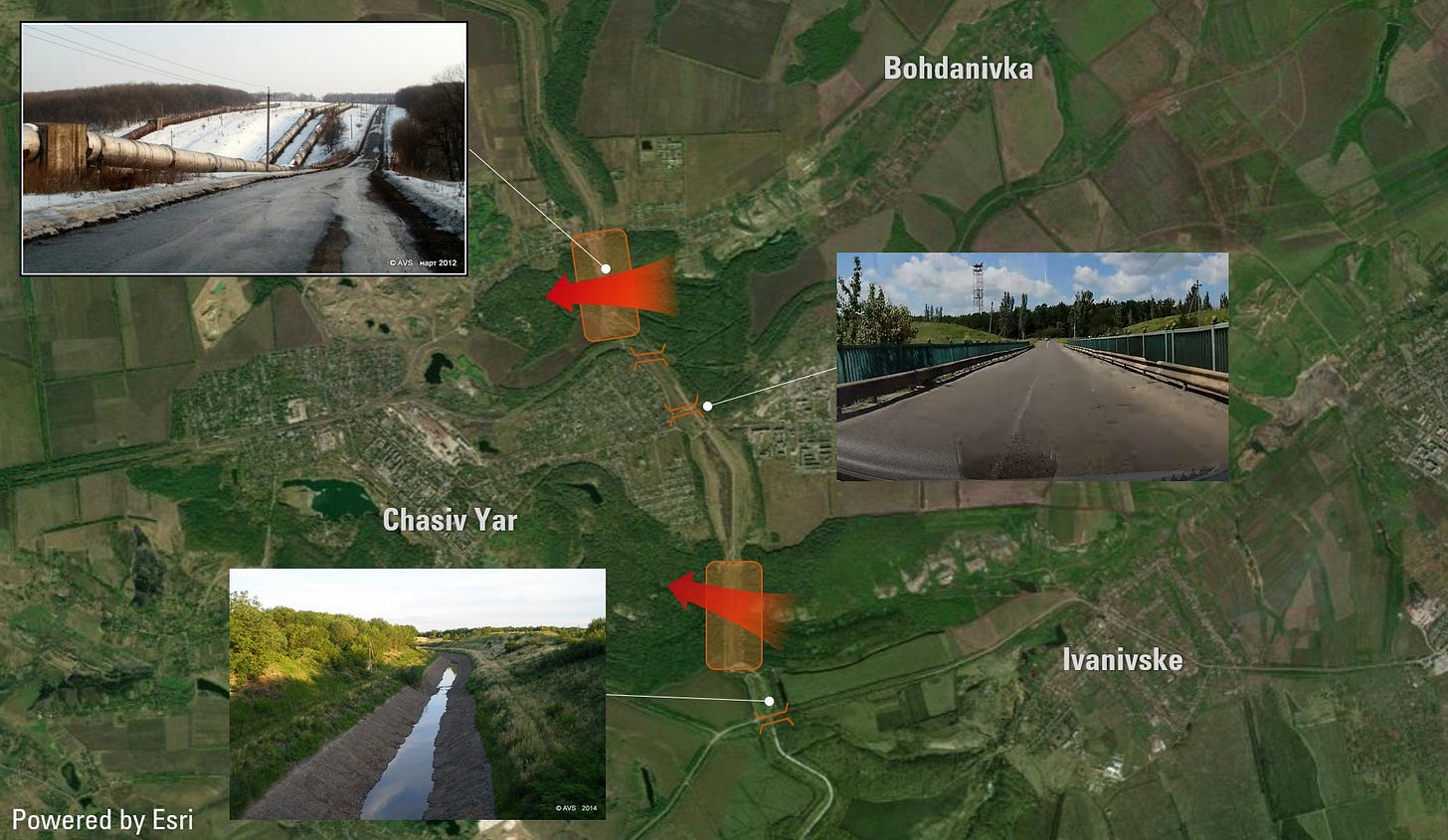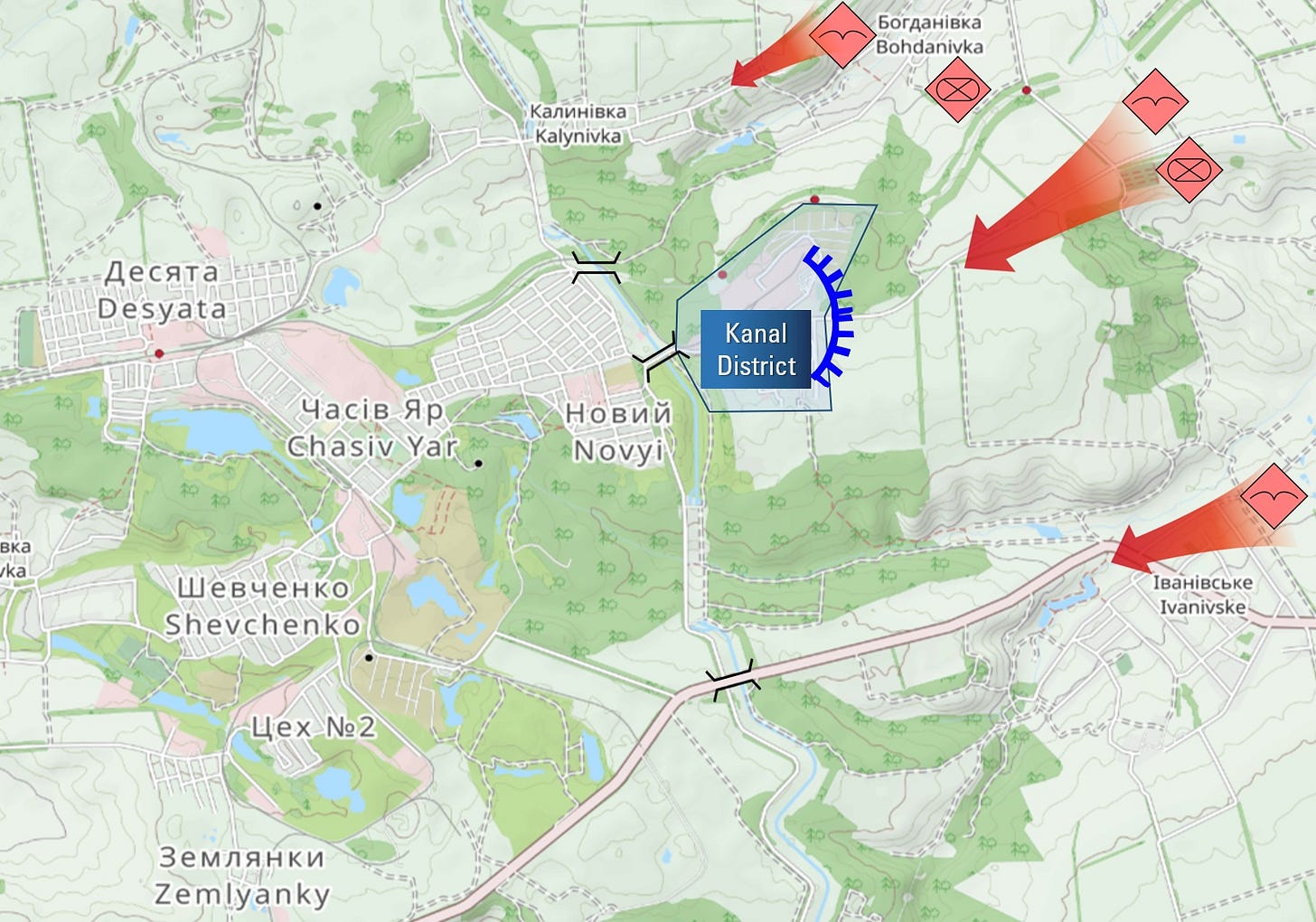Undoubtedly, the battle for Chasiv Yar, located west of Bakhmut, is a litmus test for both sides. If Ukraine were to lose control of Chasiv Yar, it could have dire consequences as it would provide a direct route for the Russian army to advance towards key cities in Donbas, such as Kostyantynivka and Kramators'k. Russian forces are attempting to exploit any weaknesses in Ukrainian defenses, including manpower shortages and insufficient supplies of weapons and ammunition. Meanwhile, the Russian forces' inability to capture Chasiv Yar by summer will suggest serious problems within the Russian military. Despite their advantages in personnel numbers, vehicles, artillery, ammunition, and capabilities for close air support and long-range strikes, their failure to seize Chasiv Yar will raise serious doubts about their ability to successfully assault larger towns and cities like Kramatorsk, and Slovyansk.
Additionally, our analysis has revealed some concerning signs during a recent assault by a mechanized unit against Ukrainian defenders in Chasiv Yar, indicating that the situation could rapidly deteriorate for Ukrainian troops. However, it's important to note that the situation is not hopeless for Ukrainian forces. With the right measures taken in time, the tide of the battle could potentially shift in Ukrainian favor. For a more comprehensive understanding of the situation, we encourage you to read our full report.
Contents
Setting the Stage
a) Topography
b) Shaping Enemy MovementsRussian Forces and Their Targets
Discovered Problems
a) Shortfall in Minefields
b) Close Air Support MissionsSummary
1. Setting the Stage
Chasiv Yar's geographical location makes it a good defensive position, effectively deterring Russian forces from launching attacks on key cities in Donbas. The potential loss of Chasiv Yar could result in frontline destabilization, as it would further extend the bulge formed in the Siversk area. Favorable geographical features in the area surrounding Chasiv Yar present an opportunity for the Ukrainian side to inflict serious losses on the enemy. By using the advantages offered by the terrain, Ukrainian forces can potentially seriously slow down or even completely stop advancing Russian forces, despite their multiple advantages.
a) Topography

Chasiv Yar holds a favorable position over its surroundings, particularly in comparison to Bakhmut, the point from which Russian forces are advancing. The residential district known as Kanal, situated on the eastern side of the water channel, has multiple high-rise buildings, further providing existing advantages. An important caveat is that satellite analysis indicates that many of these buildings have already incurred damage.
The road connecting Chasiv Yar and Bakhmut has several bridges over the water channel. With the right approach and correctly allocated resources, Chasiv Yar could potentially be a very formidable obstacle to advancing Russian troops.
b) Shaping Enemy Movements
In total, there are three bridges over the canal. If Ukrainian troops decide to retreat from the Kanal district, these bridges will likely be destroyed, slowing down the Russian advances.
While the canal itself may not be particularly deep in certain sections, it will be a serious obstacle for vehicle movement, forcing the enemy into an infantry-centric battle. The areas highlighted in orange do not have water channels, instead being separated by large pipes, as seen in the provided photo. After the destruction of bridges, Russian forces may likely attempt to advance through these areas, taking advantage of the cover provided by the surrounding forest and the absence of the water body.
2. Russian Forces and Their Targets
Traditionally, Russians deploy airborne forces in important areas of the frontline to exert pressure on Ukrainian troops. While the current state of Russian airborne units may not significantly differ from regular infantry, their overall readiness and mobility tend to be higher than other units. The assignment of multiple regiments from the 98th Guards Airborne Division and 11th Separate Air Assault Brigade to advance in the area confirms the importance of this particular direction for the Russian command.
As mentioned earlier, the Kanal district stands at the forefront of the defense and is a key target for Russian assaults on Chasiv Yar, as demonstrated by the unsuccessful attempt by Russian forces to seize it on April 4th. That being said, the likelihood of eventual Russian advancement into the Kanal district remains high, especially considering the destructive power of KAB bombs, which erase residential buildings making defense of the area complicated. The deployment of better-motivated units, substantial vehicle numbers, and the employment of close air support by multiple SU-25 aircraft during the recent assault further confirm that Chasiv Yar is a primary target for Russian forces in the area. The ongoing efforts to pinpoint vulnerabilities in the defenses and exploit them will continue, with Russians likely to also attempt advances on the flanks. Recent pushes on Bohdanivka and Ivanivske by Russian airborne units suggest further intentions to advance on the flanks of Chasiv Yar, aiming to pave the way for envelopment if successful.
3. Discovered Problems
The recent assault by Russian troops led to the destruction of numerous vehicles and high casualties among assaulting troops, as evidenced by a video released by the 67th Brigade. However, despite the initial success, this recent assault has raised concerns, suggesting that the defense of Chasiv Yar could rapidly become challenging for the defenders.
a) Shortfall in Minefields
Frontelligence Insight reviewed multiple videos and satellite imagery to reconstruct the approximate route taken by the Russian armored column on the 4th of April.
It is evident that the armored column successfully traveled on the dirt road to the town without encountering minefields. This raises significant concerns, as not only were the armored vehicles able to approach Chasiv Yar along the road, but they also entered the Kanal district without encountering mines. Considering this route as a major direction of attack, and with prior knowledge that Russian forces would likely advance in this area following the capture of Khromove, our team finds it unusual that the Russians were able to enter the town on their first major attempt. This indicates a potential vulnerability in the defenses.
b) Close Air Support Missions
Another concerning indication is Russia's deployment of at least four SU-25 aircraft for Close Air Support missions, which operated close to Chasiv Yar. Such bold actions, coupled with the absence of downed aircraft in the area that day, underscore the gravity of the problem Ukrainian forces face with their air defenses. This not only highlights the deficiency in long-range air defense systems to counter threats like KAB bombs but also reveals shortcomings in Short-Range Air Defense (SHORAD) capabilities. It is likely that Russians will continue to exploit this vulnerability, further complicating the defense of Chasiv Yar for Ukrainian forces.
4. Summary
In summary, recent events in Chasiv Yar have highlighted both successes and vulnerabilities in Ukrainian defenses. While highly motivated brigades like the 67th were able to repel attacks from company-sized mechanized units despite facing enemy superiority in vehicle numbers, artillery, MLRS, and close air support, it is concerning that Russian forces were able to rapidly enter the town without encountering mine barriers or the long-term fortifications that officials had declared as formidable and well-prepared in the area.
In our team's assessment, the situation is difficult due to the accumulated effect of multiple problems. These include delays in initiating fortification construction, an inadequate number of personnel and units due to delayed mobilization efforts, and a lack of urgency in implementing necessary changes to the mobilization process. Additionally, there is a shortage of supplies from Western allies, particularly in artillery, long-range weaponry, and air defense systems. Furthermore, the training of personnel following the adoption of mobilization laws will require time, as Ukraine cannot afford to deploy undertrained soldiers to the frontline. Consequently, Russia is likely to maintain its advantage in manpower, air power, artillery, vehicles, and ammunition. While Chasiv Yar possesses significant defensive potential, effectively utilizing this potential may require additional attention and effort from the political and military leadership. The terrain alone is not enough to halt advancing Russian forces, heroism and skillfulness of defenders can't be the only pillar of defensive tactic, hence Ukraine needs to have a comprehensive defense approach that accounts for potential weaknesses and previous mistakes.









Thanks for these columns, Tatarigami! They really help to understand the situation.